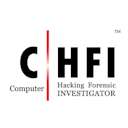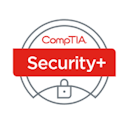
Summary:
Learners gain hands-on experience with the advanced pentesting methodologies and tools. This advanced course immerses learners into target-rich, hardened network environments, simulating full penetration tests from start to finish. Ideal for those aiming to achieve their OSCP certification.
Great For:
- Exploitation Analyst
- Vulnerability Assessment Analysts
- Cyber Defense Analyst
- Cyber Defense Incident Responders
Learn:
- Information Gathering
- Vulnerability Scanning
- Web/Client-Side Attacks
- Active Directory Attacks
- Report Writing
Benefits:
-
Improved Security Posture: The latest penetration testing tools and techniques available in this course, enable businesses to identify and address vulnerabilities in their network environment faster than ever before
-
Employee Retention: Invest in your best and brightest with advanced training opportunities. Stronger cybersecurity protections and a happier team is a win/win
-
Competitive Advantage: Don't get caught by a breach and maintain a competitive advantage by developing a well-trained cybersecurity team. Protect your team and organization
-
Regulatory Compliance: Avoid potential fines and penalties and maintain a positive reputation by exceeding regulatory requirements.



